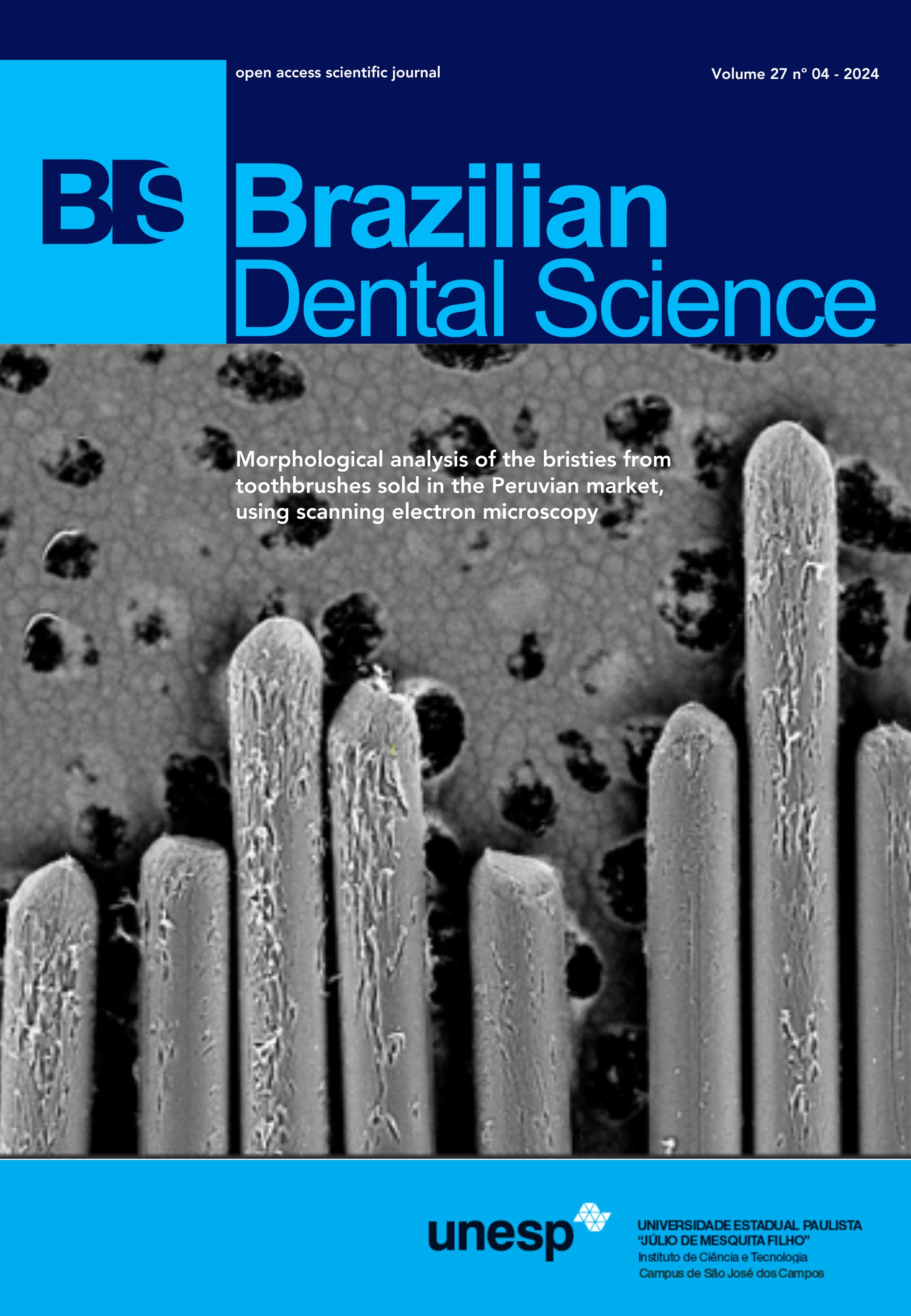The Antibacterial and remineralizing effects of orthodontic adhesive modified by nano-chitosan loaded with calcium phosphate
DOI:
https://doi.org/10.4322/bds.2024.e4552Abstract
Objective: The objective of this study was to evaluate the remineralizing and antibacterial effects of orthodontic adhesive modified with nano-chitosan loaded with calcium phosphate, and to investigate the adhesive’s physical and chemical properties. Material and Methods: Transbond™ XT adhesive primer was modified by nano-chitosan loaded with calcium phosphate, this study compared three groups: Control primer without any additive, 5% and 10% nano-chitosan/ calcium phosphate primer in terms of Fourier Transform Infrared Spectrometer, Shear Bond Strength, Degree of monomer Conversion, Contact Angle measurement, Antibacterial properties against Streptococcus mutans and Lactobacillus acidophilus, and Field Emission Scanning Electron Microscopy with Energy Dispersive X-ray Spectroscopy to examine remineralization of the demineralized enamel. Statistical Analysis used to compare the results using descriptive statistics, one-way ANOVA, and Tukey’s post hoc test. Statistical significance was set at P<0.05%. Results: Both 5% and 10% nano-chitosan/ calcium phosphate primer showed significant increases in the SBS, DC, antibacterial, and remineralization of demineralized enamel (higher mineral contents and greater Ca/P ratio) when compared to the control group. Contact angle values showed non-significant differences among groups. Conclusion: The orthodontic adhesive primer modified with nano-chitosan/ calcium phosphate showed improved physical, chemical, and biological properties including enhanced antibacterial and remineralization compared to the commercial non modified adhesive primer. The 10% nano-chitosan/ calcium phosphate primer group displayed superior improvements across all the tested adhesive properties compared to the control and 5% nano-chitosan/ calcium phosphate primer groups.
KEYWORDS
Calcium phosphate; Chitosan; Degree of conversion; Orthodontic adhesive; Remineralization.
Downloads
Published
How to Cite
Issue
Section
License
Brazilian Dental Science uses the Creative Commons (CC-BY 4.0) license, thus preserving the integrity of articles in an open access environment. The journal allows the author to retain publishing rights without restrictions.
=================




























